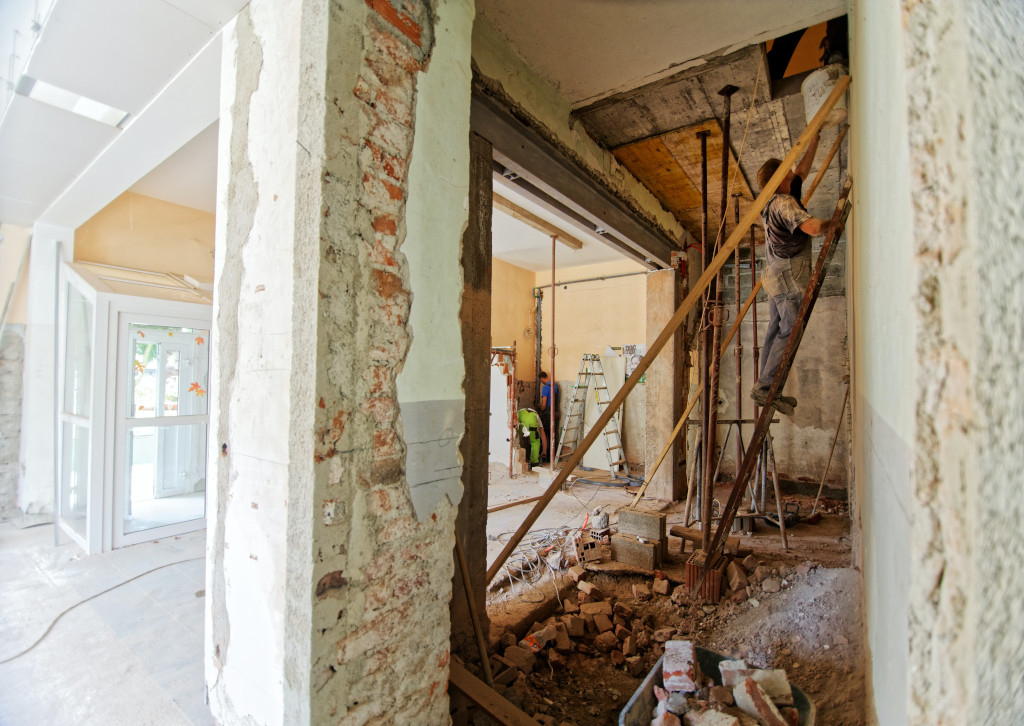
Clichés are often true and it is the case that a picture can be worth a thousand words.
![]()
Did you miss our previous article…
https://www.cmcconstruction.net/?p=691


Clichés are often true and it is the case that a picture can be worth a thousand words.
![]()
Did you miss our previous article…
https://www.cmcconstruction.net/?p=691


VJS Construction Services, CSCI Construction, and Basic Resources, Inc. recognized for their innovative approaches to challenging projects.
Did you miss our previous article…
https://www.cmcconstruction.net/?p=688


AutoCAD is an incredible tool, helping architects, engineers and design teams to create precise 2D and 3D models with ease. But companies often run into problems when it comes to sharing those designs – which can cause significant challenges on projects further down the line.
To share information from AutoCAD with other stakeholders, most design teams will convert their files into PDFs or other read-only formats. And there are two good reasons for this.
On the one hand, this reformatting ensures that everyone will be able to access the file, regardless of the software they have. Secondly, the process helps protect a firm’s intellectual property from the risk of editing or repurposing.
However, using read-only files complicates the feedback process. Owners and collaborators are forced to mark up changes on PDFs – or even by hand – and return those documents through any number of channels.
This creates risks:
There is a great alternative available to improve collaboration – and outcomes – on projects. Here’s why project teams should add Autodesk Build into AutoCAD-based workflows.
Autodesk Build enables teams to share design files securely in their native format, which can be accessed from any desktop, laptop or mobile device. The real-time platform creates a single source of truth available to everyone on the project.
New versions automatically replace old documents, eliminating the risk of working from outdated plans. And because there’s unlimited storage and version management, it’s possible to compare past versions of designs – resulting in fewer errors and a deeper understanding of the project.
Importantly, Autodesk Build offers alignment to the ISO 19650 naming convention to support better data management.
Autodesk Build bridges the gap between the design team, owners and construction companies. Files can be accessed in a wide variety of formats, from the office or the site, and either viewed or edited depending on the permissions set.
Through the online cloud viewer, stakeholders can directly and precisely annotate plans with their feedback and changes. Design reviewers can be tagged and notified instantly, enabling teams to discuss alterations in real-time for a more collaborative dynamic. Reviews are completed more quickly and effectively, while information is shared that will lead to better outcomes on the build.
Any file uploaded to Autodesk Build is traceable, whether it’s a PDF, DWG or any other format. At any given time, it’s possible to visualise the history of a file – including when it was created, who has viewed it and any changes that have been made. There is a guaranteed audit trail, with everyone seeing the latest information as it is generated.
This eliminates any doubt or disputes about what has been received by different stakeholders, saving time on follow ups and tracking. Ultimately, this higher level of transparency also leads to greater confidence across the project team – supporting stronger relationships between collaborators.
Rather than a simple document management system, Autodesk Build is a project communication tool that connects stakeholders across the lifecycle. Files become the starting point for exchanging information and beginning additional workflows.
For example, to streamline communication with the build team, designs can be published from AutoCAD to an on-site mobile device within two steps, complete with approval processes and audit trails.
Other workflows can be started within the system: for example, attaching a cost to an issue with an RFI or setting up a meeting to discuss the problem; creating daily logs or defining snagging lists; storing GPS referenced photos or managing assets and their deployment status.
With multiple data points in one place, the project team can benefit from more detailed, holistic data and reporting. And through machine learning, the platform can offer predictive analytics, so that teams can mitigate issues before they occur.
Many companies are gradually transitioning from 2D to data rich formats like BIM modelling. However, in the meantime lots of knowledge will be stored in traditional file types, with projects often including a hybrid of multiple formats. With Autodesk Build, teams have the flexibility of managing and visualising a wide range of file types as they transition.
What’s more, the workflows are very similar for different formats; for example, you can create issues on any file format supported by the viewer. This means that Autodesk Build can not only support traditional workflows, but help companies undertaking the journey from 2D to 3D for the future.
Integrating Autodesk Build into AutoCAD workflows helps to connect everyone from design team and supporting disciplines to the construction team and owners.
Having an accessible single source of truth streamlines workflows, improves transparency and mitigates errors, for better collaboration – and better outcomes – on construction projects.
And importantly, by supporting advanced data analysis and the transition to 3D modelling, this platform can help designers to transform for the future.
To learn more Autodesk Build, visit our website.
The post Top 5 Reasons to Add Autodesk Build to Your AutoCAD Workflows appeared first on Digital Builder.
Did you miss our previous article…
https://www.cmcconstruction.net/?p=685


WZW Construction is a Sydney developer-builder. The company manages projects end-to-end; it purchases land, plans the design, builds, and then sells its properties through its in-house real estate team.
Until a few years ago, the company mainly developed hi-rise apartments in Sydney, Melbourne and Brisbane. But recently, consumer sentiments have changed; inner-city living is no longer quite so necessary or desirable. In part, that’s down to some of the high-profile horror stories of poor construction in buildings like Sydney’s Opal towers, but also in part to the pandemic which has reduced demand.
“Everyone is moving to a work-from-home model,” says Wesley Wei, project manager at WZW. “And if you’re working from home, you don’t want to be crammed into a 60 square metre apartment.”
As a result, WZW now focuses on constructing duplex homes in the suburbs of Australia’s largest city. It’s a strategy that is reaping the rewards. The company now has around 500 projects in the pipeline and annual revenue approaching $15 million.
For the last year, the company has been using Autodesk’s BuildingConnected to manage tendering and subcontractor engagements.
Due to a small workforce, WZW relies heavily on teams of subcontractors during the construction phase of each project. A year before embracing BuildingConnected, the company started using PlanGrid to streamline the resolution of defects once construction was completed. Until then, they had relied on a tedious manual process.
PlanGrid was simple and easy to understand. Wei found he could give it to anyone, and they would be able to use it. Because every piece of information on the build was suddenly at his fingertips, the process of inspecting units and logging faults instantly became more efficient. The time savings were significant.
So when Wei was offered the chance to try BuildingConnected, he didn’t hesitate. He had already seen how implementing technology could improve the business. Before BuildingConnected, preparing trade packages and emailing them individually was time-consuming.
“We were doing everything manually. We’d store the responses in folders and key all the information into a spreadsheet,” says Wei. The whole process took far too long—time WZW simply didn’t have to spare.
The process also led to confusion for subcontractors. When they received the tender packages, they had to interpret complex information and make assumptions about the effort and materials required. There was a chance of subcontractors underquoting—and therefore putting their business at risk—or overquoting—which could put the project at risk.
What BuildingConnected offered was a chance to standardise and simplify both sides of the process. Its contractor database would speed up the process of sending out the tender packages, and the tender responses would be centralised and easy to access. The tender comparison tool, in particular, promised transparency and insight into the process of comparing quotes that Wei knew would save time and money.
Once the trade packages were set up in the system, Wei was ready to go. From then on, preparing tender packages was as simple as copying and pasting information and then sending out a link to complete the quote in BuildingConnected.
“BuildingConnected saves us a lot of paperwork,” says Wei. “We put the information into the system, and it spits out what we need.”
The new system is now fully embedded in WZW’s tender process. When Wei needs to assemble a team of subcontractors for a project, it’s no longer an exhausting process. “When I’m looking for contractors, I use BuildingConnected all the time,” says Wei. “We also use it to go back and make sure people have charged us in line with their quotes.”
Although the system is easy to use and the implementation went smoothly, WZW has faced some challenges with adoption from subcontractors. Although each receives an invitation to tender via a link in BuildingConnected, some continue to produce their quotes in the traditional way and email them through.
“They are old school,” says Wei. “When they see a system like BuildingConnected they’re just not used to it. So they’ll send back a quote in the way they know how to.”
But Wei is far from deterred. He has seen the benefits and transparency that BuildingConnected brings to the process of engaging subcontractors and will not be returning to the old process. Instead, when a quote is received by email, Wesley and his team enter all the details manually into BuildingConnected. They do it because it’s worth it. BuildingConnected does far more than just managing the process of obtaining quotes; it gives total visibility over who has quoted what and why there are differences. In fact, Wei estimates that running the tender comparison tool across all quotes received saves around 35 minutes for every package. Multiply that across numerous packages and up to 500 individual projects, and the impact is enormous.
Obviously, Wei’s aim for the long term is to have all subcontractors using the same process. He can foresee a time in the future where only quotes submitted in BuildingConnected are considered as generations who are more comfortable with technology start to influence the way subcontractors respond to quotes.
“If it’s large-scale and very competitive,” he says, “then absolutely. But if there’s not much competition—only one or two quotes to consider—then even if someone isn’t using BuildingConnected I will have to consider them.”
Wesley Wei has always had an affinity with technology. He knew there was a better way to manage the tendering process and has found it in BuildingConnected. In the year since he first started using it, the system has made the process of comparing tender submissions quick and easy. As a result, it is now the company’s lead tool to manage tenders and subcontractor engagements.
Specifically, BuildingConnected has brought:
You can request a demo of BuildingConnected here.
The post Throwing Away the Manual: How WZW Is Automating Its Tendering Process to Save Time and Money appeared first on Digital Builder.


The accompanying tables show the top 10 major upcoming educational and medical construction projects in Canada. They are all in the planning stage and are mainly new projects, but may also involve additions and/or alterations.
![]()
Did you miss our previous article…
https://www.cmcconstruction.net/?p=678
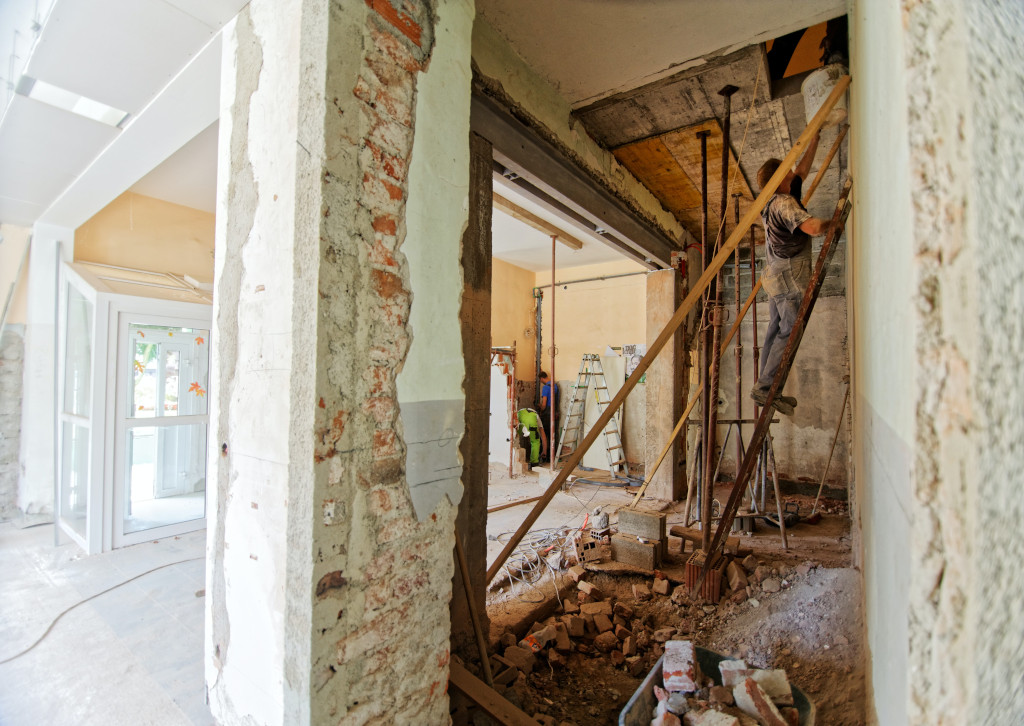
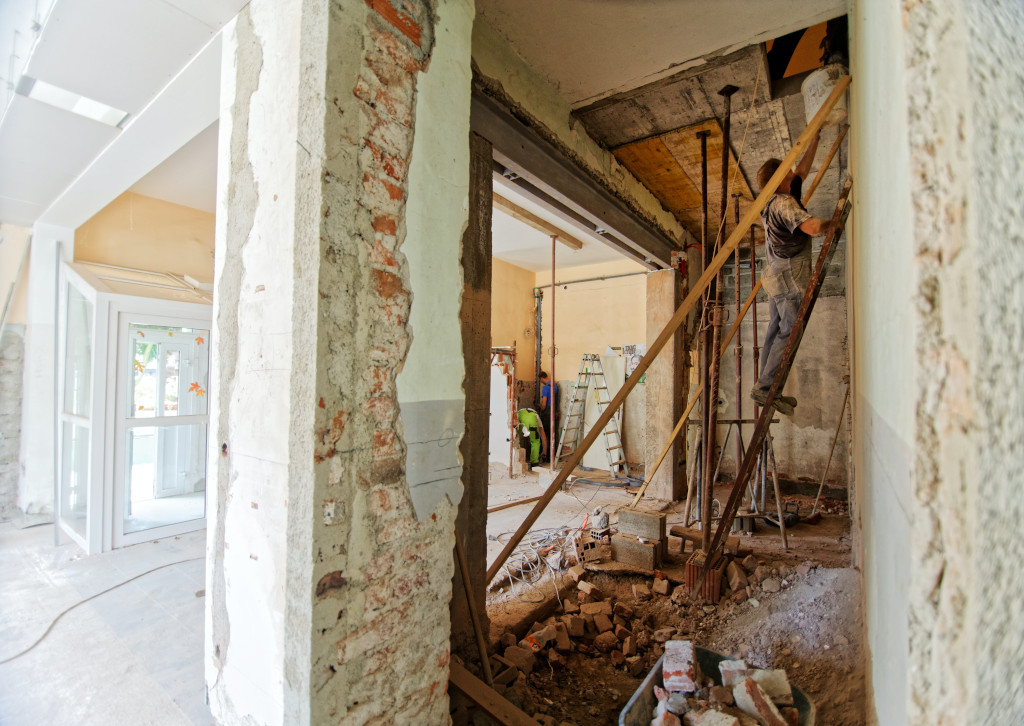
Inspirations from Laila Ali, the latest on key industry trends, technology deep dives and much more!
Did you miss our previous article…
https://www.cmcconstruction.net/?p=675


In the construction industry, the abundance of data can be exciting or overwhelming depending on who you talk to. In a new construction report from Autodesk and FMI, Harnessing the Data Advantage in Construction, research shows that “bad” construction data is commonly associated with poor outcomes in project decisions. So, how much data do you really need?
The critical factor with data in construction is less tied to quantity and is more about quality. It’s whether or not it’s actually useful. And even then, if your data isn’t good, it doesn’t help you make real world decisions, especially at the field supervision or project manager levels. In spite of the industry’s growing reliance on construction technology, only 55% of report respondents stated that their organization has implemented a formal data strategy for their project data.
Further, our research also shows poor quality construction data, may have impacted over $1.8 trillion in global construction costs in 2020 alone. You can see the detailed cost breakdown in the complete report here.
One of the best steps you can take to dramatically improve your effectiveness in managing projects is to create a formal data strategy. Aside from the benefits of strong data management, one of the most important takeaways to come out of this report is the actionable, 4-step process to implementing a data strategy. We share the high-level steps below, but encourage you to download the complete checklist for deeper insight.
DOWNLOAD DATA STRATEGY CHECKLIST
To support data capture, management and analysis in your organization, start with a formal data strategy. This strategy will help eliminate burdens on the team tasked with managing data and increase consistency and accuracy.
In our report, Harnessing the Data Advantage in Construction, respondents who had a formal data strategy reported a much greater percent of usable project data. Other benefits included less rework, fewer missed schedules, and fewer project overruns.
The proof is in the numbers when it comes to formal data strategies. If you’re wondering what bad data means for you, consider that a contractor with $1 billion in annual revenue could have upwards of $165 Million in cost impacts from bad data, including $7.1 Million in avoidable rework. It’s clear that a better strategy for managing data can bring significant positive impacts to your organization.
With savings this significant, you might be wondering why more organizations haven’t created formal data strategies. There are several common obstacles that can deter companies of all sizes from implementing a strategy.
Among the respondents in Harnessing the Data Advantage in Construction, the top reasons for not creating a formal data strategy included not knowing how to start, the potential costs, and what resources will be required.
Lack of formal data training is another reason why so many firms feel hesitant to create a formal data strategy. Only 38% of respondents in our survey were provided with formal data management or data analysis training. Yet in contrast, 50% of respondents provide their staff with formal safety training. To increase investments in formal training tied to data, we’ll first have to change the perception of its importance.
The research uncovered that training is found at higher levels in organizations that have formal data management strategies (48%) and those that always or often incorporate data into decision-making (47%). Compare that to organizations without a formal data strategy, where training only occurs 27% of the time.
It’s clear that getting started is often the hardest part of creating a data strategy. The volume of project data can feel overwhelming and add to feelings of stress. This four-step process will make implementing a data strategy easier and attainable for your organization. If you’d like deeper insight on the following steps, we encourage you to download the checklist.
GET THE CHECKLIST
Where can your organization most benefit from data-driven insights? Look for the areas of your organization that can generate the most value. Doing so can help you achieve buy-in and ROI faster. Your immediate goal should be to prove that a data process improvement has clear value.
In our research with industry leaders, many began with quality assurance or safety. While this may not apply to all, this is an example of two areas that often have data readily available. Having this single point of focus will help your team prioritize and accelerate the impact of the solution.
Fred Meeske, Vice President at Rosendin explains, “For teams starting to build data standards and processes, it is important to keep two things in mind: first, build an interdisciplinary team that focuses on easily achievable goals. This will enable you to learn while still providing immediate value. More intricate questions with more effort and time requirements can have a bigger impact, but when starting, nothing beats the immediate impact. Once momentum is built, and the questions are well defined, the team can start tackling harder questions.”
Picking a focal point requires you to consider some important questions. What do you want to do better? What would look different if you were able to leverage your project data and generate insights? Specific questions like this, and more, will help you articulate your organization’s aspirations with data.
You need buy-in from your project team and their involvement in the decision-making process. This will help to increase their engagement while minimizing resistance to change.
McKinstry, a specialty contractor in Seattle, Washington, leans on an internal Product Management Organization (PdMO) to achieve employee buy-in. The PMO team is in charge of implementing cutting-edge solutions for clients throughout the construction process. They connect the common needs of each line of business to the overall digital transformation process.
This internal department works on the success of these data standardization efforts. They follow best practices such as the diagnose before you prescribe approach, with a thorough discovery process to identify pain points, root causes, and impacts of not having data standards. “By qualifying and quantifying this pain in terms of business value, we can articulate and prioritize the need to standardize our data among other important process and technology improvements across our enterprise,” shares Dace Campbell, Director of Product Management in Construction at McKinstry.
Buy-in from all potential users is a requirement because the success or failure of a plan relies on the adoption by and execution of the frontline staff. Gathering feedback from end-users is one of three important components that organizations say help them achieve buy-in for their data strategies.
In our survey, we learned that over a third of respondents describe their organizations’ data as inaccurate, incomplete, and inconsistent. Yet only 36% had started a process for identifying bad data and repairing it. In fact, several industry leaders shared that it took up to two years to completely “clean” their data.
How do you prevent tedious and resource-heavy issues like this one? First, you need to standardize how data is captured. As you implement this process, examine how the data will be leveraged so it can be converted into insights.
Dr. Jad Chalhoub, Technology Solutions Implementation Lead at Rosendin describes the challenges of collecting standardized data as “figuring out what we want to use the data for, and subsequently what data needs to be collected and to what accuracy. Different types of applications require different tolerances and collection methods, so understanding the use case is extremely important.”
There are ways to increase the likelihood of company-wide adoption of data standards and data strategies. A few of those things fall under a simple commitment to resource allocation like money, people and tools.
We can’t understate how important a common data environment (CDE) is to your construction data strategy. In Harnessing the Data Advantage in Construction, leaders stressed the value of a connected construction environment, or complementary technology solutions with robust integration capabilities to facilitate the flow of project data. Bespoke customizations to the data environment hinder the access of future industry-wide analytics.
A single point of access to data improves the ease of reporting and gathering advanced data analytics. Dr. Chalhoub describes standardization as a tool; standardization techniques can be made to all collected data. However, that does not mean the data will be comparable. “There’s always another layer you can standardize, and it’s important to know when to stop and how to use the other tools in your toolbox,” he adds.
There are a few best practices on data quality that’ll give you a head start on your strategy. Arguably the most important one is ensuring that the data collected are accurate and in a standard format.
Having a data management strategy can help improve efficiencies via better, and faster, data-backed decisions. A formal data strategy can also support efforts to improve decision-making, avoid rework, and prevent lost profits. Planning to use data effectively by committing to a formal data strategy is the way to not only remain competitive, but give yourself an edge.
Ready to start building a data strategy? Download our four-step checklist to get started today.
DOWNLOAD THE CHECKLIST
The post How to Create Your Construction Data Strategy [Checklist] appeared first on Digital Builder.

Advances in construction technology continue to accelerate what’s possible for the industry at large. The challenge with all this new technology is the sheer volume of project data it generates.
In fact, over the past three years alone, our research shows that new project data has doubled industry-wide. Couple that with common industry challenges in capturing, managing, and analyzing data, and we find a startling $1.8 trillion in cost impacts to the construction industry globally due to “bad” data. This is notably associated with the impact of bad data on decision-making.
In today’s construction landscape, working fast is a competitive advantage. Whether you’re coordinating with stakeholders, generating designs, or managing a jobsite, the speed at which you make decisions can make or break your projects.
With the right data management systems and strategies, construction teams can easily get the information they need to make good decisions that move projects forward at minimum risk.
A new report from Autodesk and FMI, Harnessing the Data Advantage in Construction, reveals the fundamental need for proper data management in construction, and the surprising cost of inaction. It also identifies current roadblocks and practical, actionable steps to implementing a data strategy that can make your projects significantly more profitable.
DOWNLOAD THE REPORT
Read on to get a glimpse of some key findings you’ll pick up from the report.

Data is only as good as it is useful. So when it comes to construction data, true value lies in quality, not quantity. Having a lot of information isn’t necessarily a good thing, and that’s especially true if you’re looking at bad project data — i.e., your data is inaccurate, incomplete, inconsistent, or untimely.
In our research, 30% of the survey’s respondents indicated that up to 50% of their organization’s data are considered bad.
Having poor project data comes with consequences. Without accurate information, you won’t be able to make the best decisions, which can ultimately hurt your projects. In our research, respondents indicated that bad data led to poor outcomes in a third of their organization’s decisions.
As for the causes behind bad project data, our research found that the top contributors include:
So, what should construction professionals do to address the issue of bad project data? One important step is to tighten up your data entry practices. Inconsistent data entry is the largest cause of bad data. So by standardizing how you capture information, you can prevent bad data from permeating throughout your organization, and negatively impacting your bottom line.
*Please refer to the full report for detailed definitions of bulleted items
We’ve already established that having good data is essential to making sound decisions. However, this has serious impacts in the field because these are your frontline decision-makers. It’s your project management and field supervision staff that are collecting, managing, and analyzing data every week.
The biggest reason behind the lack of data-driven decision making, according to respondents, is the urgency required when making a decision. And when accurate data isn’t readily available, we’re forced to move forward even when we don’t have all the information. Here are the top three risks to project decision-making:
You can already see how good data serves to resolve major concerns associated with making critical decisions in the field. Read the full report to see the complete list of risks to decision-making.
From the report, “The first step to supporting project staff who are tasked with data management and analysis is implementing a formal data strategy. Having a framework in place will lift the burden from busy supervisory staff and it will improve data consistency and insight moving forward.”
The problem for those without a strategy in place is that project data is not consistently informing decision-making. Only a fraction (12%) of respondents say that they always incorporate project data in their decision-making. Over 50% of survey respondents indicated they use project data when making decisions only occasionally, or even worse, not at all.
Our study found that respondents who “always” or “often” use project data when making decisions are more likely to have a data management plan or strategy already in place.
What elements should your data plan include? When asked about their own strategies, respondents highlighted they include the following components:
The report also reveals what organizations put effort into when committed to quality data. Respondents said the following investments ensure decision-makers in the field can access actionable, high-quality data:
Our findings clearly lead to the importance of implementing a formal data strategy for project data, but we found that only 55% of respondents have done so themselves.
According to the report, “Even if organizations understand the benefits of having a data management strategy, the path to implementation may be littered with roadblocks. Clearly, project management and field supervisors should require a plan to collect, manage, and analyze data. However, without knowing what investment is required or where to begin, leadership may not back the project. Obtaining buy-in from all key stakeholders is necessary for the successful roll out of a data management strategy.”
When asked what is holding respondents back from implementing a formal project data plan/strategy themselves, the top three concerns included:
Further, organizations with revenue over $500 million were more likely to suggest “No leadership/organizational support” as a reason for not implementing a formal data strategy. This may be tied to how challenges manifest in a large construction firm compared to a smaller one, according to findings.
In the report, we also share key learnings associated with the lack of understanding benefits of a formal data strategy. There’s also the factor of workforce training. What do you do with all your data? Who manages it? How do you create consistency in entry, management and use of data?
We provide insight into those questions, and so much more, in Harnessing the Data Advantage in Construction, an in-depth report made in partnership between Autodesk and FMI. You can download it right now at no cost.
DOWNLOAD FULL REPORT
At the end of the day, when equipped with good project data, construction stakeholders can rest easy knowing that they have reliable information at their fingertips to make important decisions quickly.
Accomplishing this requires having a formal data strategy in place, and one that’s executed by skilled team members. With these two components in place, you’ll be in an excellent position to leverage quality data for meaningful project decisions.
Download the report, Harnessing the Data Advantage in Construction: Why adopting a data strategy can bring firms a competitive edge.
If you’d prefer to listen and learn, you can download the audiobook version of the report as well.
The post New Report Reveals Data Strategy is a Key Advantage in Construction appeared first on Digital Builder.

Construction output has fallen for the fourth-month running taking new work levels 3.2% below the pre-pandemic high watermark in February 2020.
Latest official figures for output show the strong construction rebound has been halted in its track by shortages of products and materials.
Growth in the volume of output was also impacted by rising prices of raw materials such as steel, concrete, timber and glass, according to the latest ONS report for July.

Monthly construction output fell by 1.6% in July, driven by a decline in repair and maintenance (2.4%) and a 1.1% fall in new work.
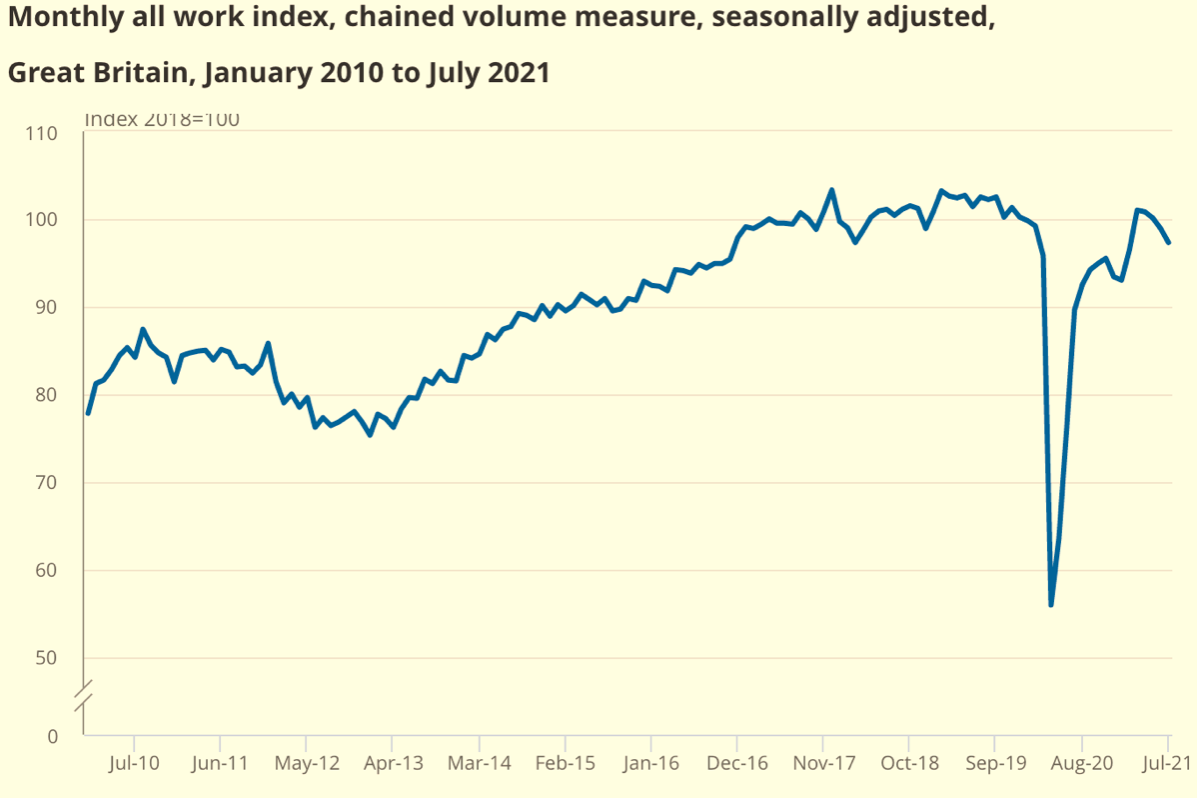
Mark Robinson, group chief executive at public procurement group Scape, said: “The construction output’s first significant contraction after several months of growth should come as no surprise given the ongoing impact of material and labour shortages in recent weeks.

“The sector has already overcome many significant challenges presented by the pandemic and managing the short-term risk caused by inflation should be the immediate priority.
“Greater collaboration between clients and contractors will remain central to this and help to ensure that an accountable and healthy environment is created from the outset.”
He added: “This also includes holding large contractors to fair payment practices, which will boost cashflow for SMEs and lessen the burden on smaller suppliers.

“Critically, these challenges mustn’t be allowed to dampen ambitions as government funding continues to be geared towards green and inclusive community regeneration as part of the recovery.
“With many important projects waiting in the pipeline, procurement will have a vital role to play.”
Private housing for both new work and repair and maintenance led the monthly decline in construction output. While the only sectors to maintain significant growth momentum were infrastructure and industrial new work.

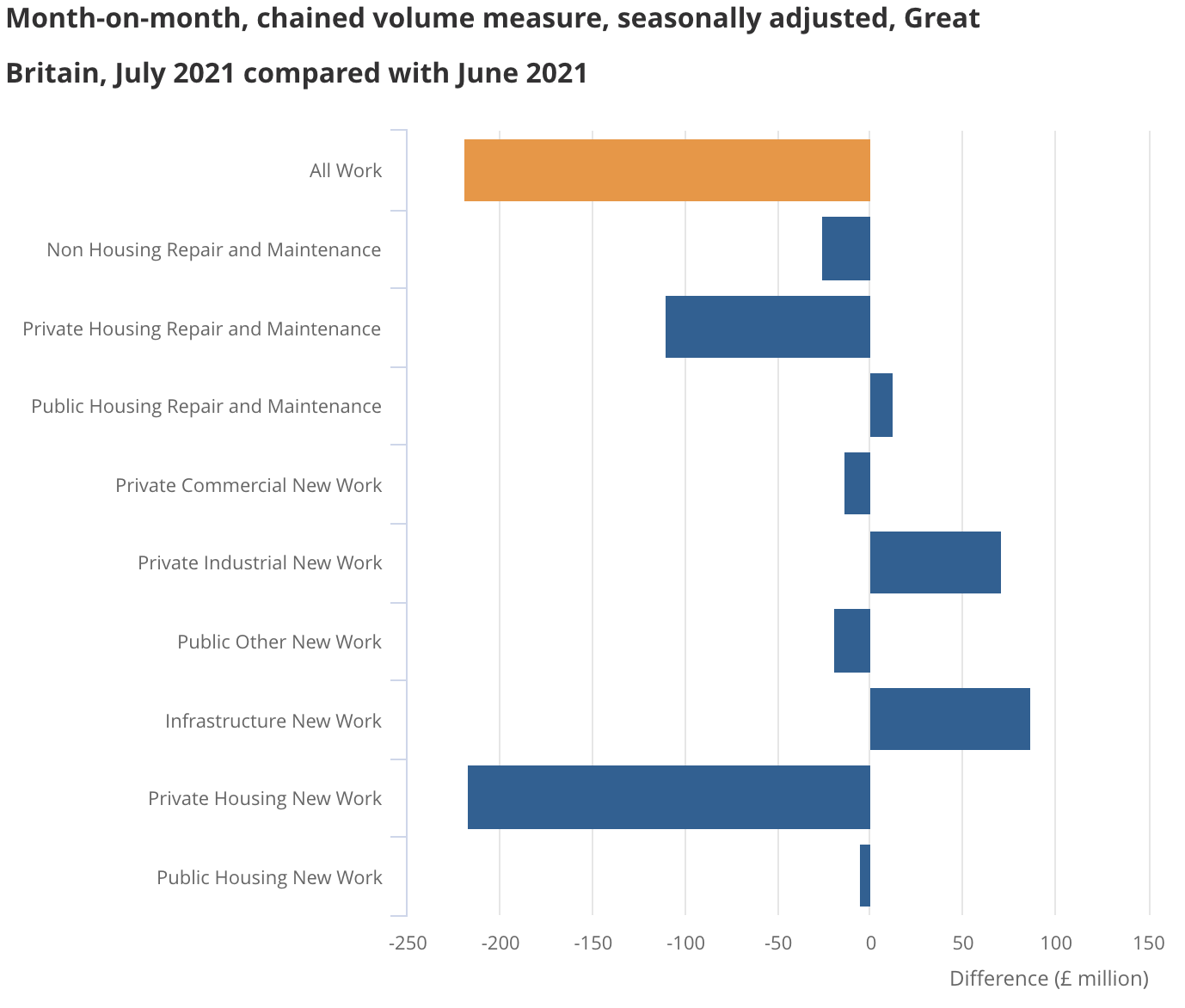
Fraser Johns, finance director at Beard, said: “With the ONS figures putting output below pre-covid levels for the first time in months, we are seeing the real long-term impact of the pandemic start to hit home.
“The supply chain issues and price rises which stem from the slowdown in production globally, and friction at the borders due to Brexit, have knocked customer confidence and is a real concern in terms of future growth.
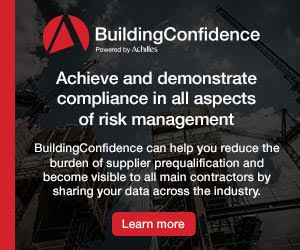
“As an industry we have been warning that the main threat to recovery would be supply chain issues and price rises since the start of the year. Firms will price a job now at one level only for that to rise significantly by the time they’re ordering materials.
“Contractors have to be proactive about this issue in terms of working closely with customers and consultants, ensuring they understand fully the implications of the delays and price rises, as well as maintaining strong relations with suppliers.
“By assessing the situation on a daily basis and introducing multi-step procurement processes in order to absorb the extended lead-in times for certain materials, we can mitigate the risk of disruption to projects on the ground.
“But the reality is, we’re looking at a tough winter ahead especially if further waves of Covid impact production further.”

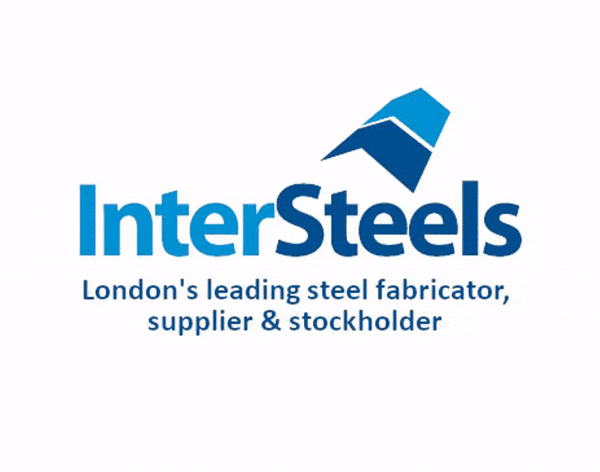

One of the keys to effective technology adoption is a strong partnership with your tech provider. While the quality of technology is certainly important, you should also consider that company’s commitment to ensuring your success.
At the end of the day, successful technological deployment goes beyond savviness. It hinges on the strength of your relationships with your technology vendors and the quality of those partnerships. No one knows this better than Daniel Charest, Project Executive at J. Calnan & Associates. As someone who’s been working in the construction management realm for over 20 years, Daniel knows firsthand how essential technology partners are. Specifically, how having the right tech partner helps ensures the firm’s long-term success.
We recently caught up with Daniel and chatted about his journey to becoming a Project Executive. Check out what he has to say below.
Calnan and Associates (JC&A) is a New England-based firm that provides construction management services. We’ve been around for over two decades now, and we’re celebrating our 25th anniversary in September. We’re in the commercial construction business and our primary focus is in the corporate and the life science marketplaces. We’re fortunate to be well-seeded for a lot of new opportunities in our 25th year.
I graduated from Wentworth Institute of Technology in 2003 with a degree in Construction Management.
Over the course of my time there, I had co-opped at a couple of different construction companies, but predominantly at a firm that’s no longer around. And while I was there, I got to meet some really awesome individuals. I met my boss and mentor, Steve Robak, along with some others who are also here at JC&A. So, I’ve been working with Steve now for 20 plus years, and I’ve been at JC&A for nearly 17 years.
Steve and I work well together. He is Executive Vice President and Partner at JC&A and an excellent leader and guide. He’s helped me find some really awesome opportunities within the organization. Many of these opportunities challenged me as a young construction professional to set up and help add detail and focus to the then-young JC&A. One of these areas include the formation of our Technology Committee and later focus groups like our PlanGrid Build team that help train and leverage the power of technology across the organization.
I started at JC&A as an Assistant Project Manager then worked my way up to Project Manager, two to three years in. From there, I moved up to Senior Project Manager for a while. I’m now a Project Executive, and I’ve had this role for over five years with many successful projects including Bioverativ and Olympus SSA, Lifoam, Smith & Nephew and two major robotics projects in the metro Boston area; most notably Boston Dynamics new Headquarters in Waltham, MA.
The way we work and function today is a little bit different than when I first got into the role. When I started as Project Executive, I was transitioning from being a senior PM and still doing a lot of that project management function. I still act in this function today, and have the ability to shift between the various ends of the PX role as the projects and client needs call for, which keeps my day interesting. I enjoy the nimbleness and the autonomy of my role, so compared to others, I might be considered more hands-on.
One of the projects that I’m gearing up for right now is our largest job ever. It’s a core shell life science building that is currently scheduled for completion in the latter half of 2023. We’re also working with some large, well-known household brands and retailers in developing their portfolio around the Metro-Boston area. All of these projects offer many new challenges for JC&A and my role as a PX to adapt our project teams to a larger project mindset for these opportunities. Everyday is truly a new day, which helps keep things interesting for sure.
A common denominator across all these projects is they are very, very demanding. So, I see the role of the Project Executive as one that’s sitting at the intersection of the client and subcontractor relationships. On any day, within minutes, I have the chance to speak with great people representing both sides of the project team. It’s a really fascinating dynamic.
And at the same time, it’s also about saying, “Hey, we’ve got this really cool project. What can we do, as we’re building it, to make ourselves better?”
That’s the mindset that I’ve been working with and continuing to build on. To succeed in this role, we shouldn’t take anything for granted, and we shouldn’t keep doing things just because that’s the way they’ve always been done. We need to strive for continuous improvement.
A number of projects come to mind. I often go back to our first PlanGrid project, which was the Schneider Electric Headquarters. That was a project where I was a senior Project Manager all the way through the entire duration of the project.. That said, I was often acting as a Project Executive, but I didn’t really realize that until I came out of it and looked back. It was our largest project at the time and it’s very cool to have on our resume.
“I was often acting as a Project Executive, but I didn’t really realize that until I came out of out it and looked back.” —Daniel Charest, JC&A
Since then, I’ve faced similar, yet different challenges. We had a national brand hotel project that we’ve built. Upon completing, I moved to the Project Executive role.
I’ve also had a couple of other sizable jobs, some interior fit-outs, but most notably of late was a large robotics client doing the core-shell portion for their headquarters, while another team from our company did the fit-out portion. That one is currently wrapping up over the next month or so.
Another important one is the fore mentioned Boston Dynamics headquarters. That’s my favorite job in recent history. I actually led the team that won that project! We went aggressively into the interview, and our team’s humble approach to the prospective opportunity was the client’s deciding factor in allowing us to earn the work and their trust.
One of the biggest challenges that we struggle with as an industry is communication. And I think the strain that COVID-19 put on our industry provided a unique opportunity for us to embrace technology and enhance our communication practices as time goes on in the JC&A organisation and industry as a whole.
That could be in the form of a Zoom call, or in our case, Microsoft Teams. We actually started implementing Teams even when nobody had a major vision for it yet. I started using many elements of Teams and the larger benefits of Microsoft 365 before COVID, with decent success, but it was difficult to see what would be needed to help change the mindset around communication protocols. Then COVID hit, and we were able to figure out pretty quickly how we could use the technology. I had people coming up to me from our IT department, and going, “Man, I’m glad you were pushing Teams out when we did because we were ready for the pandemic.” We literally discussed over the phone some quick steps to make sure all teammates could use Teams and away we went!
It was a tough period, but we’re definitely much better because of it. Aside from learning to communicate more effectively, our team became stronger working together in a different media. People learned to support one another and realized that we didn’t have to be in the same room to be there for each other. They even realized their desk line also rang their Teams line too!
We’re doing a number of things with photogrammetry right now. We’re exploring it. Our feet are pretty wet in the drone world, as well. We’ve got a couple different drone types and we’ve been working with DroneDeploy. We’re really using that as the broker of the photo data, and rolling that out on some of our larger projects for cost efficiency. We’ve also done some things with HoloBuilder and Structionsite to name a few.
“It’s really exciting to have these nimble tools all in one place.” —Daniel Charest, JC&A
We’re currently using Autodesk Build on a number of projects. It’s still early days, but we’re looking forward to new features and other things in store for the software. Right now, I really like Meeting Minutes in Autodesk Build, as well as some of the insights dashboard features. It’s really exciting to have these nimble tools, all in one, place and function in a way that is easy for our team to learn these modern software.
All that being said, when it comes to technology adoption, it’s always a beta test for us. We’ll try anything. There are enough young people here in the company that we can talk to—they say, “Hey, this is the next best thing.”
We’ve had some new hires that have experienced other construction management solutions. But they look at PlanGrid and they’re like, “Wow, this is a lot better product.”
It’s clear that Autodesk is leading the way and we’re proud to work so closely with your team. I think it’s important to drive home how long we’ve been partners with the folks at PlanGrid. We started working with PlanGrid when it had fewer than 20 people, and we’ve been with the company ever since.
A colleague of mine and I both stumbled upon it when we had the iPad and we’re like, “What can we do with this? There’s got to be something we can do with this.” Going through the app store, we found PlanGrid and we said, “Let’s give this a try.”
Don’t be embarrassed or ever give yourself a second thought about asking a question. Whatever the question is, just ask it.
“Don’t be embarassed… Whatever the question is, just ask it.” —Daniel Charest, JC&A
You used to hear teachers say there was never a dumb question, and there really isn’t. Just question and clarify, and make sure you have a clear understanding of something. Make sure you understand what the expectation is, etc. That’s the best way to learn.
The post Behind the Build: Interview with Daniel Charest, Project Executive, J. Calnan & Associates appeared first on Digital Builder.